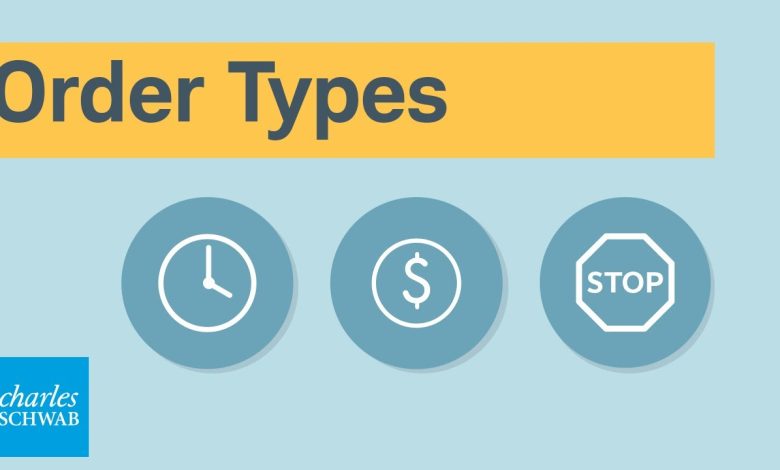Understanding Order Types: Market, Limit, and Stop Orders

- Introduction to Order Types
- Market Orders: Buying and Selling at the Current Market Price
- Limit Orders: Setting a Specific Price for Buying or Selling
- Stop Orders: Triggering a Trade at a Predetermined Price
- Pros and Cons of Each Order Type
- Tips for Using Order Types Effectively
Introduction to Order Types
Understanding different types of orders is crucial for anyone looking to trade in the financial markets. There are three main types of orders that traders commonly use: market orders, limit orders, and stop orders. Each type serves a specific purpose and has its own set of advantages and disadvantages.
A market order is an order to buy or sell a security at the current market price. This type of order guarantees execution but does not guarantee a specific price. Market orders are typically used when speed is of the essence, and the trader is willing to accept the current market price.
On the other hand, a limit order is an order to buy or sell a security at a specific price or better. This type of order provides price protection but does not guarantee execution. Limit orders are useful for traders who have a specific price in mind and are willing to wait for the market to reach that price.
Lastly, a stop order is an order to buy or sell a security once the price reaches a certain level, known as the stop price. This type of order is used to limit losses or protect profits. Stop orders can be particularly useful in volatile markets where prices can change rapidly.
By understanding the different types of orders available, traders can make more informed decisions and better manage their risk. It is essential to consider the advantages and disadvantages of each order type before placing a trade to ensure that it aligns with your trading strategy and goals.
Market Orders: Buying and Selling at the Current Market Price
Market orders are a type of order where a trader instructs the broker to buy or sell a security at the current market price. This means that the trade will be executed immediately at the best available price. Market orders are often used when speed is of the essence, and the trader wants to ensure that the trade goes through quickly.
When placing a market order to buy, the trader will pay the ask price, which is the lowest price at which someone is willing to sell the security. On the other hand, when placing a market order to sell, the trader will receive the bid price, which is the highest price at which someone is willing to buy the security.
Market orders are simple and straightforward, making them a popular choice for many traders. However, it’s important to note that since market orders are executed at the current market price, there is a possibility of slippage, where the actual execution price may differ slightly from the expected price.
Overall, market orders are a convenient way to quickly enter or exit a trade at the prevailing market price. They are best suited for liquid securities with narrow bid-ask spreads to minimize the impact of slippage.
Limit Orders: Setting a Specific Price for Buying or Selling
Limit orders are a type of order where a trader sets a specific price at which they are willing to buy or sell an asset. This allows traders to have more control over the price at which their trade executes, as the order will only be filled at the specified price or better. When placing a limit order to buy, the trader sets the maximum price they are willing to pay. Conversely, when placing a limit order to sell, the trader sets the minimum price they are willing to accept.
Stop Orders: Triggering a Trade at a Predetermined Price
Stop orders are a type of order that allows traders to automatically trigger a trade at a predetermined price level. This can be useful for investors who want to enter or exit a position at a specific price point, regardless of market conditions. When a stop order is placed, it becomes a market order once the specified price is reached.
Pros and Cons of Each Order Type
When considering the pros and cons of each order type, it is important to weigh the advantages and disadvantages of market, limit, and stop orders. Each type of order has its own unique characteristics that can impact your trading strategy and overall investment performance.
- Market orders are executed at the current market price, ensuring immediate execution. This can be beneficial when you want to buy or sell a security quickly. However, market orders do not guarantee a specific price, which can lead to slippage in volatile markets.
- Limit orders allow you to set a specific price at which you want to buy or sell a security. This gives you more control over the execution price, but there is a risk that your order may not be filled if the market price does not reach your limit.
- Stop orders are designed to limit your losses or protect your profits by triggering a market order once a certain price level is reached. While stop orders can help you manage risk, they can also be triggered by short-term price fluctuations.
Ultimately, the best order type for you will depend on your investment goals, risk tolerance, and trading style. It is important to understand the advantages and disadvantages of each order type in order to make informed decisions that align with your financial objectives.
Tips for Using Order Types Effectively
When using different order types in trading, it is essential to understand how to use them effectively to maximize your investment potential. Here are some tips to help you make the most of market, limit, and stop orders:
- Consider the current market conditions before choosing an order type. Market orders are best used when you want to execute a trade quickly at the current market price.
- Limit orders allow you to set a specific price at which you are willing to buy or sell an asset. This can help you control the price at which your trade is executed.
- Stop orders are useful for limiting potential losses or locking in profits. By setting a stop price, you can automatically trigger a market order when the price reaches a certain level.
- Be mindful of the risks associated with each order type. Market orders may result in slippage, while limit orders may not be executed if the price does not reach your specified level.
- Use a combination of order types to create a comprehensive trading strategy. By diversifying your approach, you can take advantage of different market conditions and protect your investments.
By following these tips and understanding how to use market, limit, and stop orders effectively, you can improve your trading performance and make more informed decisions in the market.



